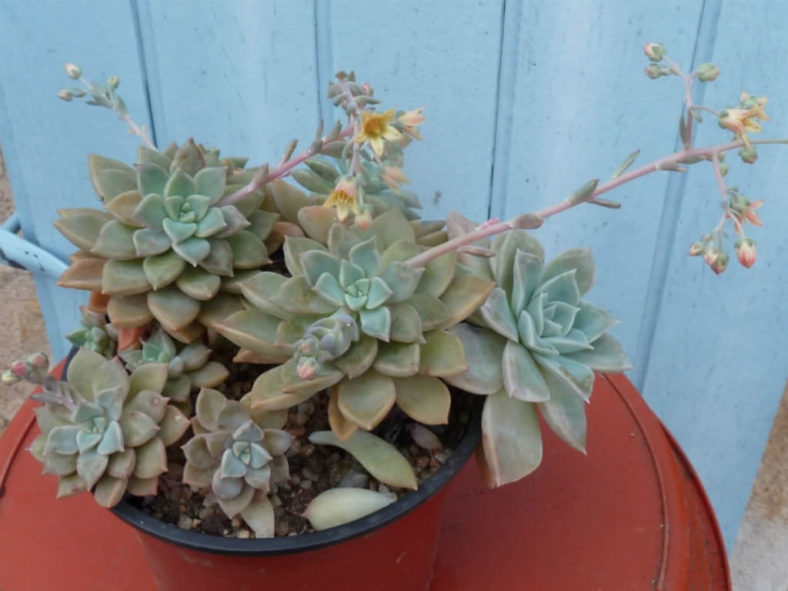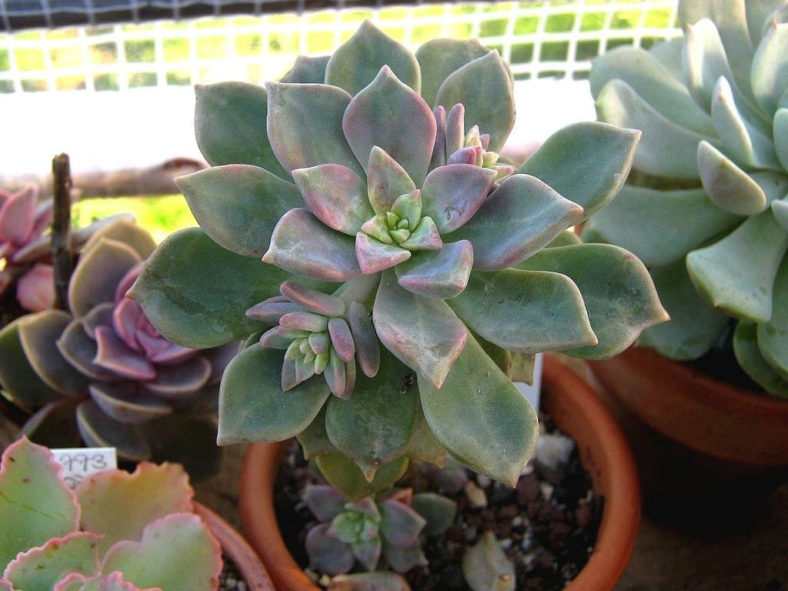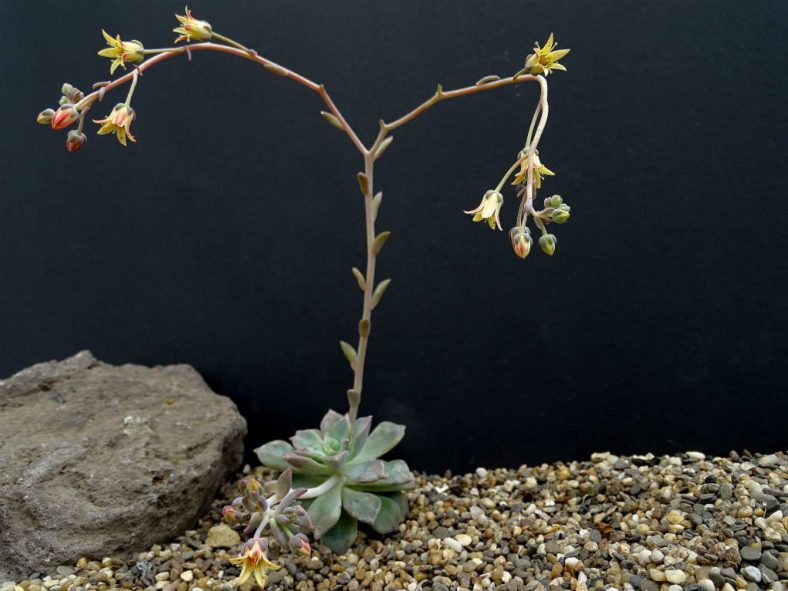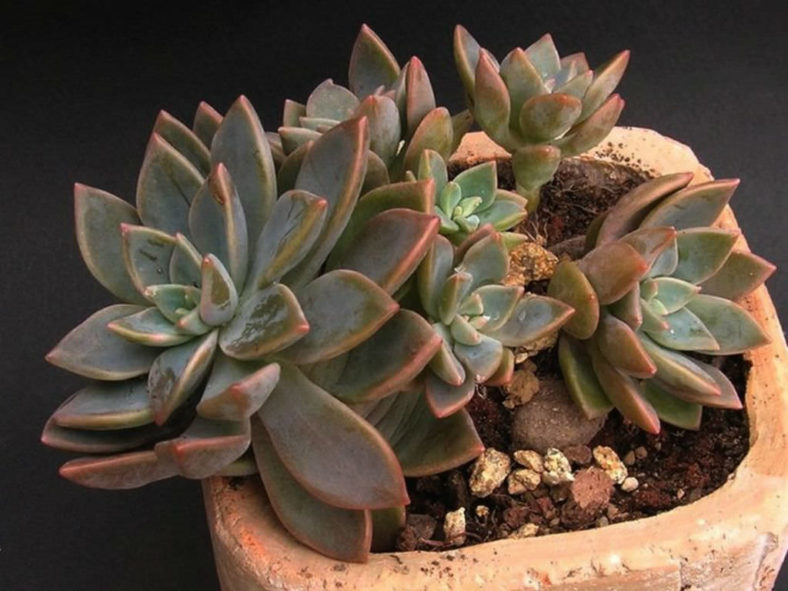Scientific Name
×Graptoveria 'Acaulis'
Synonym(s)
×Sedeveria 'Abbey Brook', ×Graptoveria 'Eguzki', ×Graptoveria 'Pik Ruz'
Scientific Classification
Family: Crassulaceae
Subfamily: Sempervivoideae
Tribe: Sedeae
Nothogenus: ×Graptoveria
Description
×Graptoveria 'Acaulis' is a succulent shrub that forms rosettes of glaucous pearly-pink leaves that turn a deeper color in winter. The leaves can grow up to 2 inches (5 cm) long.
This hybrid is a somewhat variable plant concerning the size of the leaves and the flowers, depending on the Graptopetalum paraguayense clone used for the crossing. Also, the petals inside may be plain yellow or show red dots. The flower stem can grow up to 8 inches (20 cm) tall.

Hardiness
USDA hardiness zones 9b to 11b: from 25 °F (−3.9 °C) to 50 °F (+10 °C).
How to Grow and Care
The rules for Graptopetalums care are similar to those for most succulents. Container-bound plants thrive in a mixture of peat, sand, or other grit, topsoil, and a little bit of compost. Full sun is the best situation, but they will grow in partial sun with slightly rangy results.
Graptopetalums need excellent drainage and moderate water. You can tell when to water by sticking your finger in the soil. You should water if it is dry several inches down or the fleshy leaves look shriveled. Overwatering is a cause of root rots, and the plant can get several pest infestations.
These succulents are generally easily propagated by seeds, leaf cuttings, or offsets. Any rosette that breaks off can root and start a new plant. Even a leaf that drops off will quickly root below the parent plant and produce a new rosette. The new plant feeds off the leaf until it shrivels up and falls off. The new little ghost plant had rooted and sprouted new leaves by then.
See more at How to Grow and Care for Graptopetalum.
Origin
×Graptoveria 'Acaulis' is a hybrid that results probably from a cross between Graptopetalum paraguayense and Echeveria amoena.
Links
- Back to nothogenus ×Graptoveria
- Succupedia: Browse succulents by Scientific Name, Common Name, Genus, Family, USDA Hardiness Zone, Origin, or cacti by Genus
Photo Gallery
Click on a photo to see a larger version.


